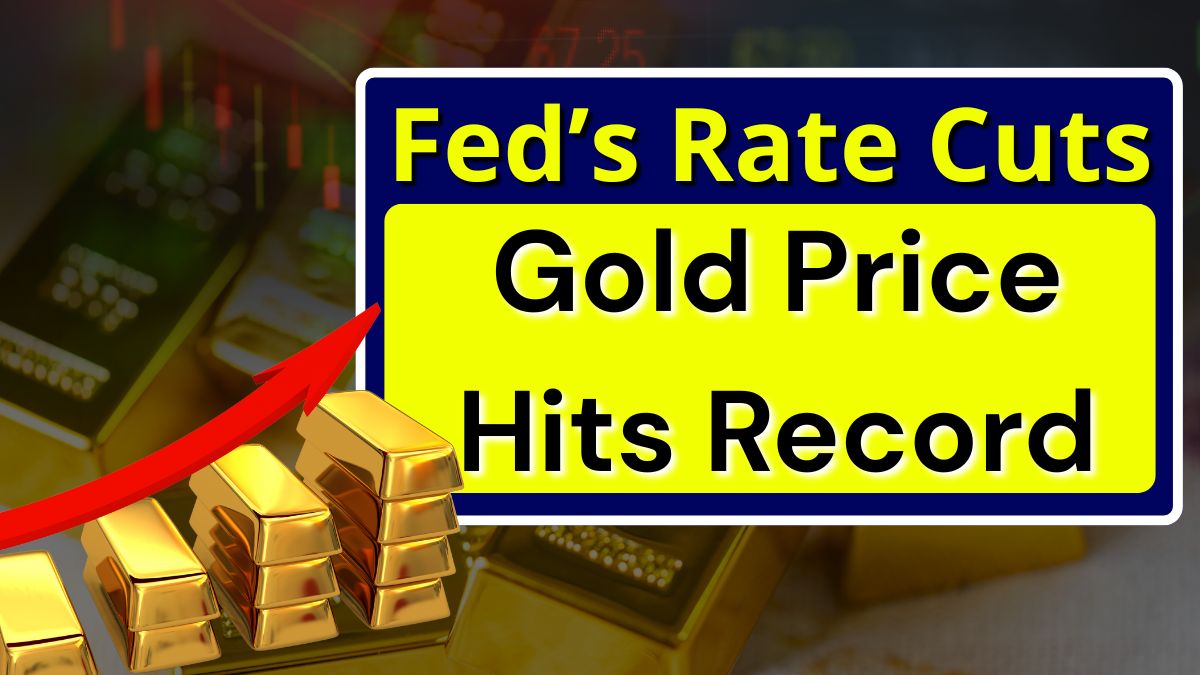If you woke up today and saw gold prices at an all-time high, you’re not alone in your surprise. The spot price of gold has soared to $4,185 per ounce, marking a new record in global markets.
But what’s really fueling this golden rally? It’s a mix of economic uncertainty, global tensions, and shifting investor strategies — and yes, even politics. Let’s break it down in plain English.
The Big Picture: Why Gold Is Suddenly Everyone’s Favorite Investment
Think about it — when the world feels unstable, people look for safety. For centuries, gold has been that safe haven. And right now, the world feels pretty shaky.
Here’s what’s happening:
- The US Federal Reserve is hinting at two more interest rate cuts this year.
- Tensions between the US and China are heating up again.
- Central banks around the world are buying gold like never before.
- The US government’s budget drama and growing investments in gold-backed ETFs are adding more fuel to the rally.
All these factors combined have pushed gold to its highest-ever level, and analysts say the momentum isn’t slowing down anytime soon.
Fed’s Rate Cuts: The Spark That Lit the Fire
According to Bloomberg, Fed Chair Jerome Powell has hinted at another 0.25% rate cut by the end of October. That small number might sound boring, but in the world of finance, it’s huge.
Here’s the thing — when interest rates fall, bonds become less attractive because they offer lower returns. So where does smart money go? Straight into gold and silver — assets that tend to rise when borrowing costs drop.
As Treasury yields hit multi-week lows, investors rushed to shift their portfolios. The result? A sharp spike in demand for precious metals.
The Political Twist: US-China Trade War 2.0?
Just when global trade seemed to be stabilizing, a fresh wave of tensions erupted. US President Donald Trump announced a halt on edible oil trade with China, stirring market worries.
In response, China imposed export restrictions on rare earth elements — crucial materials used in tech and energy. The US fired back with 100% tariffs on Chinese goods starting November 1, and Beijing warned of retaliation.
It’s a full-blown trade chess match, and investors hate uncertainty. That’s why many are rushing toward gold — the one asset that feels “safe” when everything else seems risky.
Silver’s Story: A Market Shortage Adds to the Drama
Gold isn’t the only metal shining right now. Silver has also seen an explosive rally, touching $53.54 per ounce earlier this week before easing slightly.
But there’s a twist — unlike gold, silver’s rally is being driven by a supply crunch.
In London, the world’s main hub for silver trading, there’s been a liquidity shortage — meaning fewer large quantities of silver are available for trade. This has pushed benchmark silver prices above New York futures, signaling a genuine shortage.
At the same time, an ongoing US investigation under Section 232 is examining critical minerals like silver, platinum, and palladium. Traders fear that if new tariffs are introduced — even after being exempted earlier — prices could rise even more.
Central Banks Are Quietly Stacking Gold
While investors trade headlines, the world’s central banks are steadily increasing their gold reserves. It’s like a silent vote of confidence in the yellow metal.
Countries are diversifying away from the US dollar, buying gold to protect their assets against inflation, sanctions, or political shocks. This kind of steady institutional buying adds stability — and long-term support — to gold prices.
What This Means for Regular Investors
If you’re wondering whether it’s too late to buy gold, here’s a simple truth — markets move in cycles. Gold may stay elevated as long as global tensions, rate cuts, and currency worries continue.
But instead of rushing in, it’s smarter to watch for dips and consider systematic gold investments (like ETFs or digital gold) that don’t require heavy upfront amounts.
For silver, short-term volatility might continue due to supply issues, but industrial demand — especially from solar and tech industries — could keep it strong over the long run.
Key Takeaway
The surge in gold prices isn’t random. It’s a reflection of global anxiety and shifting financial strategies. Between Fed cuts, trade tensions, and central bank demand, the yellow metal has become a safe harbor once again.
Whether you’re a casual saver or a serious investor, one thing’s clear — gold is back in the spotlight, and it’s telling a much bigger story about the world’s financial pulse.
Frequently Asked Questions
1. Why did gold prices hit $4,185 per ounce?
The record surge is due to Fed rate cut expectations, renewed US-China trade tensions, strong central bank purchases, and growing ETF investment demand.
2. What’s driving the rise in silver prices?
A shortage of liquidity in London and fears of new US tariffs on key minerals have triggered a global supply shortage, pushing silver prices higher.
3. Will gold prices keep rising in 2025?
Experts believe prices could remain strong as long as interest rates stay low and geopolitical tensions persist, though short-term corrections are possible.
